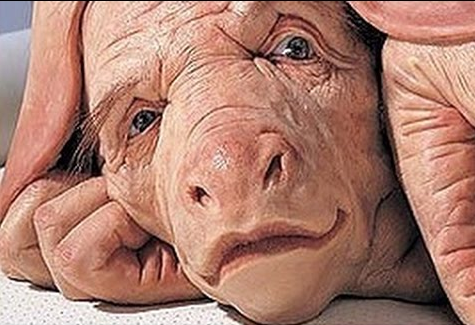

Sometimes people find out they’re a chimera accidentally, when they “fail” a parental DNA test. If the sperm/egg cells have DNA from one “twin”, while the cheek cells have DNA from the “other twin”, a DNA test will say that the person is the child’s aunt or uncle. And generally a parental DNA test collects the parent’s DNA from a cheek swab (or blood sample). There have been a few cases of a parent “failing” a DNA test, when the child is truly their own!Ī child will inherit DNA from the cells that make sperm or eggs. Sometimes people do find out they’re a chimera accidentally. You might have to get testing for a lot of other tissues as well. So it can be really hard to detect chimerism. You’d have to get a sample of tissue from your spleen to detect your twin’s DNA. In this case, comparing blood and saliva would miss the second set of DNA. However, maybe your blood and saliva both have your DNA, while your spleen has DNA from your “twin”. If you compared the DNA in your saliva to the DNA in your blood, the samples might appear to be from “siblings” instead of the same individual. For example, if your blood has cells from your “twin”, while your saliva has your own DNA, you should be able to detect this. If you’re a chimera, a DNA test might be able to reveal your chimeric status. Someone may not know that they absorbed their twin, since the distribution of cells from their twin throughout the body can be random. Taylor Muhl is a chimera awareness advocate, with a pigmentation difference on her torso as a result of her two sets of DNA! ( Image credit: Keith Berson) Of course, both of these can happen in non-chimeras too! (Read more about what causes two different eye colors here.)
Chimera human skin#
It’s possible there may be some physical signs such as having two different colored eyes or two different skin tones. People with chimerism rarely show any visible signs of having two distinct sets of DNA. Among twin embryos, ~30% will end up as single embryo pregnancies. This refers to where a fetus in a multigestation pregnancy dies in utero and is partially or completely absorbed.

This type of chimerism can be seen in what is known as the “vanishing twin” phenomenon. If this happens, the surviving fetus has two sets of DNA: its own DNA, and DNA from its twin.

If a woman is pregnant with twins and one embryo dies in the womb, the surviving fetus may absorb some of the cells of the deceased twin. Remember, we all have unique DNA! Fusion chimerismĪnother type of chimerism can be more dramatic.
Chimera human code#
You would then see that the genetic code is different. If you can find any, and sort them away from the mom's cells, you could compare the DNA from both sets. 3 But it isn’t always possible to do this, especially if the cells have similar characteristics. If they have different characteristics than the mother’s blood, it could be possible to tell them apart. Cells from the fetus can sometimes be found in the maternal blood stream. It may be possible to tell if a previously-pregnant woman is a microchimera. Just to give you some context, there might be 1 fetal cell for every 500,000 maternal cells. The level of exchange is quite small, so this type of chimerism is called microchimerism. If so, the woman essentially has a few cells that have her baby's DNA. Most of these cells die off, but occasionally a few may stick around. During pregnancy, some cells are exchanged between a woman and fetus. It turns out that most mothers are a tiny bit chimeric. If we ever needed to look at their DNA directly, we may need to look for other tissue types instead of blood. If you've ever had a blood transfusion or organ transplantation, you are probably a man-made chimera!įor example, a blood marrow recipient will have different DNA in their blood from the rest of their body. So the recipient will have two sets of DNA: their own (most of their body), and the donor's (in the donated organ). The goal is for the donor cells to permanently live in the recipient. When someone goes through either of these procedures, they are receiving cells (and DNA!) from another person. Anyone who has received an organ or bone marrow transplantation is actually a chimera. One type of chimera is actually quite common. Image from Wikimedia Man-made chimeras (organ transplantation) However, it is sometimes possible to find out if you are one!Ī mythical chimera. If this estimate is true, most chimeras must not know that they’re chimeric. However, the prevalence of natural human chimeras is hypothesized to be as high as 10%. A human chimera is made up of two different sets of DNA, from two different individuals.Įxperts aren’t quite sure how common natural chimeras are in the human population, as only 100 cases have been documented so far. In ancient Greek mythology, a chimera is a mix between a lion, goat, and serpent.


 0 kommentar(er)
0 kommentar(er)
